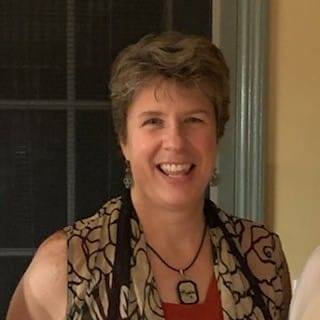About Sue Shaw

Hi, I'm Sue.
I would love to teach you and your staff about trauma; how it affects you, where it comes from, and what to do about it.
Six years ago, my son asked me to take in one of his classmates who had been unhoused. In trying to assist this young man in navigating his mental health, abuse history, the schools, his reactions to being labor trafficked, the police, and the justice system; I realized I had also experienced trauma beginning many years before. I learned about trauma firsthand, then went back and did the research.
I now teach about trauma and NEAR (Neurobiology of Trauma, Epigenetics, ACEs, and Resilience) Science with stories, and the perspective of someone who has experienced trauma and supported people who have experienced severe trauma.
At the end of 1989 with a degree in Sociology, English, and Religion, I started supporting people with disabilities in a residential setting.
In 1991, I opened the first two 24-hour Medicaid waiver-funded homes in Missouri. As staff, we were told that when we moved people out of habilitation centers their negative behavior would go away. It didn’t. I was a 23-year-old house manager who didn’t know what to do as chairs flew through the house, let alone how to support those living there plus the staff trying to support them.
I later learned that 80-90% of people with disabilities have experienced trauma. That is compared to about one in three of the general population. Among staff who support people, 59% have experienced childhood trauma themselves. Furthermore, 40-85% of staff supporting people with disabilities experience secondary trauma in the workplace.
59% of staff who support people have experienced childhood trauma, and 40-85% of staff supporting people with disabilities experience secondary trauma in the workplace.
Professional Background and Personal Experience
As I had children of my own, I moved into being a staff trainer for staff who support people with disabilities. I also became the children’s minister at my church. I later left that position to support my father-in-law on hospice in my home. After he passed, I took a job as the Associate Director of an agency which supported 45 people with extensive behavior and medical needs across 17 community homes. I also worked in the hospitals, teaching advanced CPR (BLS) to nurses and doctors. Additionally, I spent time in local elementary schools, training P.E. teachers how to teach cup stacking to their students by running their classes for a day.
In October of 2016, my son asked me to take in a classmate who had been unhoused. We are still seeking justice for him. I have had seven more young adults stay in my home since. All were referred by our neighborhood Facebook page because someone reported that they needed help. Many have experienced significant trauma. Two have ACEs scores of 8-9. Five are from other countries. I currently have three international interns staying here.
Currently, I am a Mandt and CPR trainer, and have been given the opportunity to develop curriculum to teach staff and management about trauma. We are learning something new every day.
